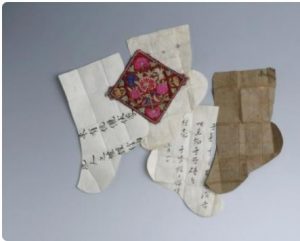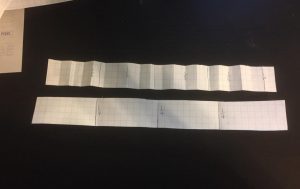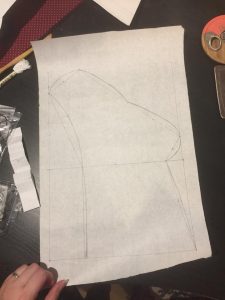
Beoseon paper patterns and pattern case, late Joseon
I’m not really sure how I started down the rabbit hole of Korean socks. It may have been that I wanted to tackle an easy accessory to add to my Korean garb and add another layer of authenticity. However, as with most things, it was not as easy as it looked and it opened a rabbit hole of research that I dove in head first.
Socks have been a part of Korean clothing since at least the Three Kingdoms period. The actual term “beoseon” is a pure Korean word, meaning it was not based on Chinese characters. The first time the term appears is in 1527. Before then, it’s thought that they used a different word with a hanja (Chinese character) origin.
Sock patterns are individualized and made per person in a family. In late Joseon, the paper patterns were folded up and protected in beautifully embroidered cases like the one pictured above. Patterns were passed down from mother to daughter when the daughter wed, as it was a household duty of a wife and mother to make socks for her family.
I did some research on patterning techniques and was coming up short. I found two patterns on Korean sewing blogs and tried to figure them out. They both used measurements from the foot but divided them into fractions of the measurements to draw out the pattern. I tested both patterns and found one was simpler to draft out, even though it used two different measurements. It’s possible that there was no one way to pattern beoseon and that families had their own way of patterning, which would explain why patterns would get passed down in families.
Since I noticed that the patterns were using fractions of measurements, I decided to try to develop a patterning method that would make it easier to draw out. Inspired by the barra drafting system, I decided to make tapes of the lengths I needed with paper and fold them into the appropriate fractions.

First set of tapes, top folded into 1/20, bottom into 1/4

It worked! The pattern here was a little trickier to use since it requires folding into 1/20, so I used another pattern that only requires two tapes of 1/5.
I’ve uploaded the handout in the handouts section, it includes some history, the patterning technique and how to sew different socks. If you try it out, let me know how it worked out for you!
